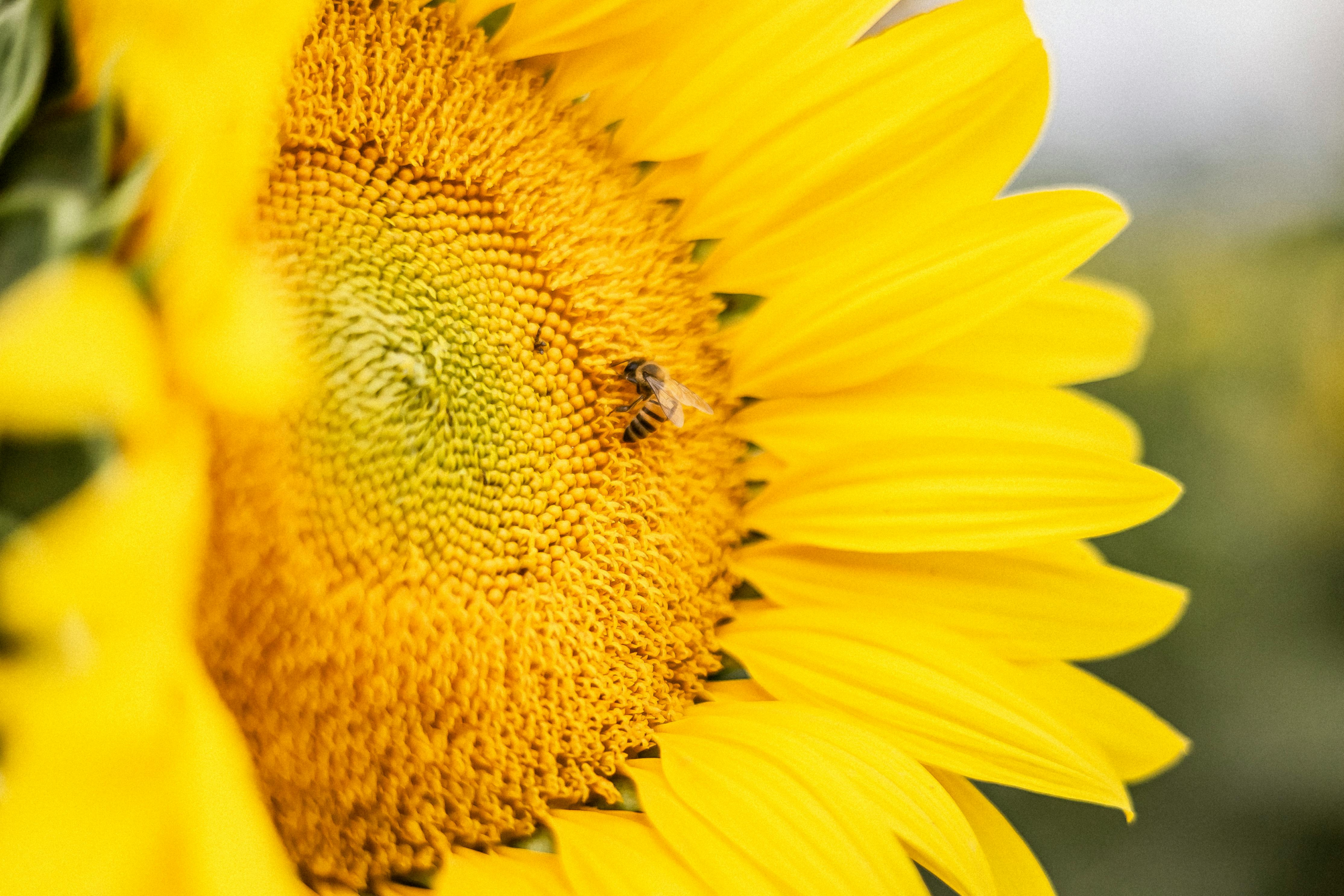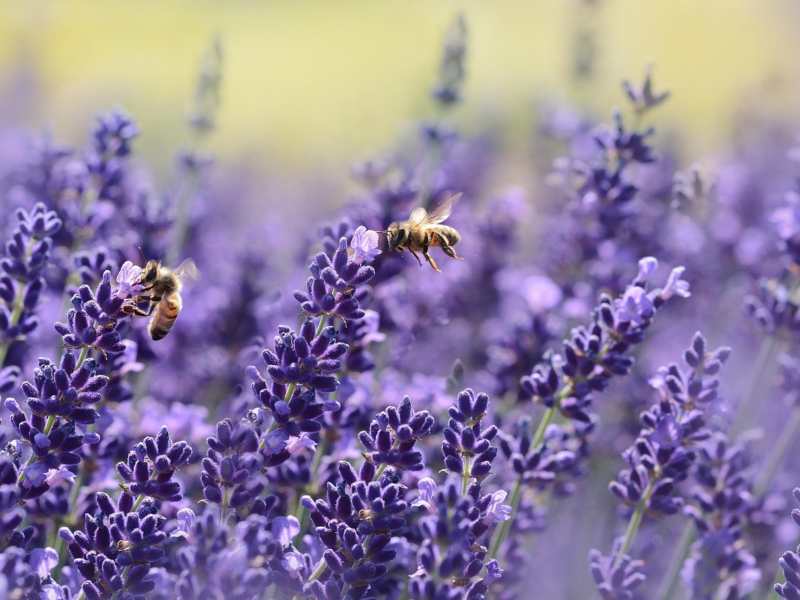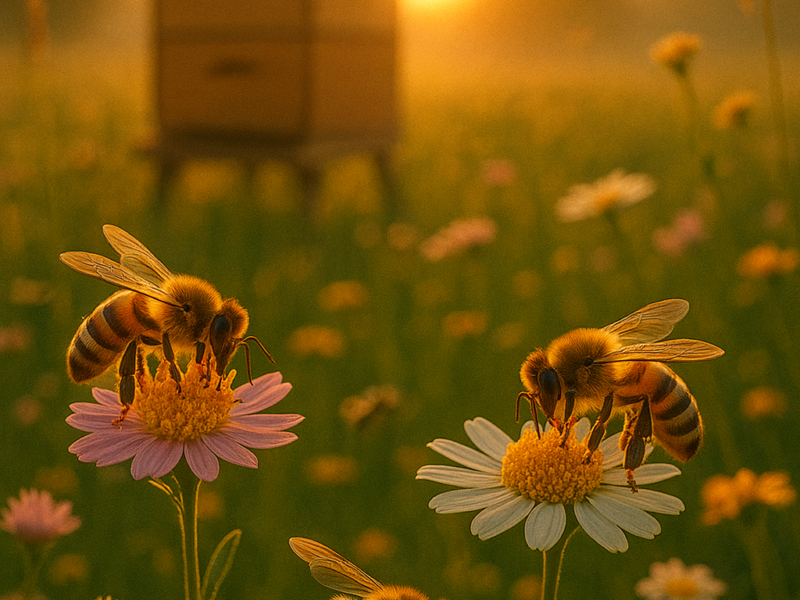🌍 Introduction
Bees are among the most critical creatures sustaining life on Earth. Their pollination efforts support nearly 75% of global crops, providing food for humans and wildlife alike. Yet, the impact of climate change has introduced unprecedented challenges to their survival.
From unpredictable weather to disrupted blooming cycles, the world’s pollinators are facing an invisible crisis. Understanding how climate change affects bees is not only essential for beekeepers but for everyone who relies on food security and ecological balance.
🌡️ 1. How Rising Temperatures Affect Bees
As global temperatures rise, bee colonies experience significant physiological and behavioral stress.
🐝 Temperature Thresholds
- Most bee species thrive between 18°C and 32°C.
- Prolonged exposure to above 35°C disrupts their ability to forage, regulate hive temperature, and even produce wax.
🧠 Thermal Stress on Queens
Queens exposed to heat stress during mating or laying eggs show:
- Reduced fertility
- Lower egg viability
- Shortened lifespan
Did you know?
A queen bee’s reproductive organs can be damaged at just 40°C (104°F), leading to colony collapse within weeks.

🌸 2. Changing Flowering Patterns and Pollination Timing
Climate change alters the phenology (timing of biological events) of plants. Flowers now bloom earlier or later than usual, leading to mismatched timing between bees and plants.
🌼 The “Pollination Gap”
When flowers bloom before bees emerge from winter clusters, nectar and pollen go uncollected. This “gap” weakens colonies and reduces seed production in plants.
📉 Decline in Forage Quality
Rising CO₂ levels decrease the nutritional quality of pollen, meaning bees get less protein from their main food source.
Did you know?
Studies show that pollen from goldenrod (a key North American flower) lost 30% of its protein content over the past 100 years due to rising CO₂.
☔ 3. Extreme Weather Events and Hive Survival
Unpredictable weather is another major threat:
- Floods destroy hives and wash away foraging fields
- Droughts limit flower growth
- Prolonged winters delay colony buildup
🧊 Overwintering Challenges
Cold snaps after early thaws confuse bees. They break cluster too early, consume winter stores, and starve before spring.
Tip:
Beekeepers can add emergency fondant or sugar bricks in early spring to prevent starvation.
🐝 Did You Know?
Bees contribute to over one-third of the world’s food supply through pollination, supporting more than 90 major crops.
🌾 4. Habitat Loss and Monoculture Expansion
As climate zones shift, wild habitats vanish. Deforestation and industrial farming reduce forage diversity.
🚜 The Monoculture Trap
Bees near monocultures (like almond or sunflower farms) experience:
- Limited diet diversity
- High pesticide exposure
- Nutritional deficiency
Did you know?
A single almond orchard can host up to 2 million hives, but after bloom season, bees face “green deserts” with no flowers left to forage.

☠️ 5. The Rise of New Parasites and Diseases
Warmer climates allow Varroa destructor, Tropilaelaps mites, and small hive beetles to expand northward. Pathogens like Nosema ceranae thrive in warmer, humid conditions.
⚠️ Example:
In southern Europe, varroa populations survive year-round due to mild winters—forcing beekeepers to treat hives multiple times annually.
Tip:
Rotate treatments and use integrated pest management (IPM) to reduce chemical resistance.
🌼 Related Articles
🌳 6. How Beekeepers Can Adapt
Despite these challenges, adaptive strategies can help protect bees.
🌻 Beekeeper Adaptation Techniques
- Relocate hives to shaded or higher-elevation areas
- Maintain local floral diversity
- Harvest honey responsibly (leave enough stores)
- Install ventilation and insulation systems
- Support reforestation and wildflower corridors
Did you know?
Planting just 10 m² of diverse native flowers can feed up to 50,000 bees throughout the summer.
💚 7. Global Conservation Efforts
Worldwide initiatives are emerging:
- EU Pollinator Initiative aims to restore 3 million hectares of habitat.
- UN Food and Agriculture Organization (FAO) promotes bee-friendly farming.
- Local urban beekeeping programs encourage rooftop and community hives.
(Insert image of urban rooftop hives)
Prompt: “Urban rooftop garden with beehives and city skyline in background.”
Alt text: Rooftop beekeeping supporting urban biodiversity.
❓ Frequently Asked Questions
Q1: How does climate change affect honey production?
A: Climate change disrupts the timing of flower blooms and reduces nectar flow. This means bees have fewer foraging opportunities, which can lower overall honey yields and impact the taste and texture of the honey.
Q2: Can bees adapt to rising global temperatures?
A: Some bee species can migrate to cooler regions or alter foraging patterns, but adaptation is limited. Extreme heat weakens colonies, reduces queen fertility, and increases mortality among worker bees.
Q3: What can beekeepers do to help bees cope with climate change?
A: Beekeepers can provide shade, install hive ventilation, avoid overharvesting honey, and plant diverse native flowers around apiaries to ensure year-round forage availability.
Q4: How do droughts and floods impact bee populations?
A: Droughts limit flower availability and water sources, leading to malnutrition, while floods destroy hives and wash away plants. Both conditions reduce bee survival rates significantly.
Q5: Why are bees important in combating climate change?
A: Bees enhance biodiversity by pollinating plants that capture CO₂ and stabilize soil. Protecting pollinators strengthens ecosystems’ natural ability to absorb greenhouse gases and sustain agriculture.
🧠 Conclusion
Climate change is not a distant threat—it’s reshaping the world of bees today. The survival of pollinators determines the health of our ecosystems, our food supply, and our shared planet.
From extreme weather to disrupted blooming, bees are signaling the urgent need for sustainable change. Every tree planted, every wildflower sown, and every pesticide avoided brings us one step closer to harmony.
Protecting bees means protecting life itself. 🌍🐝



